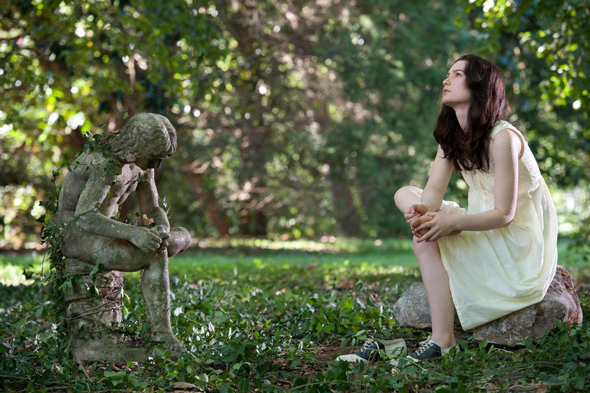Interview: ‘Stoker’ director Park Chan-wook

Park Chan-wook, praised Korean director of cult revenge hit Oldboy, was in New Zealand recently for the Big Screen Symposium, stopping by Auckland’s Academy Cinema for the release of his latest flick Stoker, which is in cinemas now.
The domestic thriller is Chan-wook’s first English-language feature and stars Mia Wasikowska as India, the troubled daughter of an unstable mother, played by Nicole Kidman. When shifty Uncle Charlie (Matthew Goode) moves in soon after the death of her father, India comes to suspect he has ulterior motives. But instead of feeling outrage or horror, the friendless India becomes increasingly infatuated with him.
Our man Tony Stamp (who absolutely loved the film) had a chat with the director…
Do you think you approached this story differently than a Western filmmaker might have?
I’m not sure, it’s difficult for me to imagine how an American filmmaker would have made it. Do you think I did?
Absolutely- you delve into certain areas I’m not sure American filmmakers would’ve been brave enough to, particularly when you draw a line between sexual arousal and violence. Did you have any problems with the rating system?
I didn’t want to have anything in the film that would categorise it as anything more than an R rating. With this film, I didn’t set out to make something that depicts violence or sex in an explicit manner – not because I had to contend with ratings, but because the subject matter demanded an elegant approach. India is such a delicate character, who as a girl entering womanhood would despise anything too worldly, which is one of the reasons I took this approach.

How did you put yourself in the mind of an 18-year-old girl and get the audience to empathise with her?
It is said that every person has a masculine side and a feminine side to their personality. Although I am not a woman, I tried to awaken the feminine side that’s inside me. I also have a wife, and I have a daughter who is the exact same age as India, which is one of the reasons I chose to do this script. So that’s what I tapped into. I had a lot of conversations with my wife and drew inspiration from her. I would almost say I co-wrote the opening narration with my wife.
One of the things I was trying to imagine was what it would be like to wear a skirt. At the opening and closing of Stoker, you see India standing on a bank, and her skirt is fluttering in the wind. What would that feel like? I often wondered about that. When it came to Stoker, and wanting to create the sensation of liberation, and becoming free, I recalled having wondered about this, and so incorporated this into that scene.

The film is structured so we keep flashing back to certain events, learning new information every time. Some of the tensest moments in the film come from this technique. How much of that was in the script, how much did you plan, and how much came out of the editing process?
It happened at every different stage of the production. It was something I had intended to do right from the beginning, so that mindset informed every process making Stoker. When I read Wentworth’s script, India’s shower scene was already written in a cross-cut fashion. It inspired me to bring in as much cross-cutting as possible – to not only go back and forth between two different time tenses, but make it more intense every time the idea is revisited, and bring in more than two time tenses and more than two locations.
During the storyboarding stage, these ideas became even more refined, and during the editing process I was fortunate enough to work with an amazing editor in Nic De Toth, who was able to take my ideas about cross-cutting and take them even further, and the result is you end up with these very intricate sequences. The shower scene is a good example of the seed of the idea being present in the script, then being refined during many different processes.
















